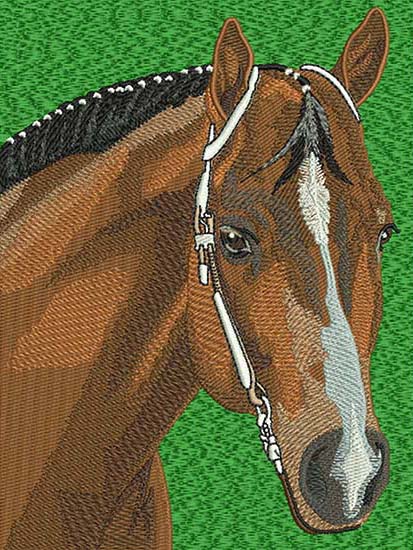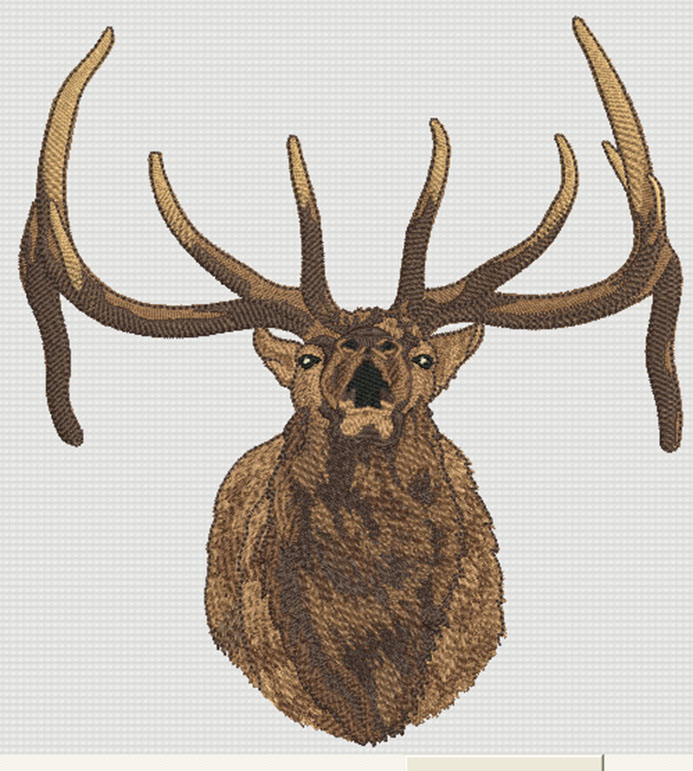Embroidery has been the queen of clothing fashion for many centuries. Embroidery designs could be traced to sometime around the 5th century and it has evolved so much over time. One of the major developments in the recent times is the digitization of embroidery. The infusion of technology into handmade delicacies of the thread has made a tremendous impact in today’s fashion. The minute patterns that usually take tender and careful weaving of experienced seamstress for long hours can be done with much greater accuracy and lesser time with embroidery digitizing. The patterns can be fed into a specialized software to produce designs, that could then be fed into sewing machines for that perfect design.
The Evolution:
 As history goes the initial stages of embroidery can be dated back to the 5th century to the ancient Chinese region. It later evolved as people started stitching the edges in patterns in order to have a firm seam. Embroidery became an important part of clothing during the medieval and colonial English periods when the long skirts were in the vogue. Embroidery moved beyond fashion and it waged on to become one of the scales to measure quality, richness, beauty and power. Women of the royal societies wore elaborate gowns that had thousands of intricate, hand-sewn embroidery patterns.
As history goes the initial stages of embroidery can be dated back to the 5th century to the ancient Chinese region. It later evolved as people started stitching the edges in patterns in order to have a firm seam. Embroidery became an important part of clothing during the medieval and colonial English periods when the long skirts were in the vogue. Embroidery moved beyond fashion and it waged on to become one of the scales to measure quality, richness, beauty and power. Women of the royal societies wore elaborate gowns that had thousands of intricate, hand-sewn embroidery patterns.
Embroidery remained a craft of the hand for a long period of time and it was during the time of Industrial revolution when machine-made embroidery patterns started coming into existence. Technological advances have introduced so many new tools and techniques in the field of embroidery. This has made mass production of materials a very easy process, thus reducing the cost of the end product and the time taken to create these fabrics. However, nothing beats the fineness and precision of a seamstress’s fingers. Designs with minute stitches and complex patterns are still hand embroidered and are sold at a higher rate than the mass produced embroidery patterned fabrics. Listed below is the process to follow while creating a digitized embroidery pattern.
The Process:
There are many different types digitizing software available in the market. Choose the one that is comfortable and easy to use. Basic design patterns could be designed in any of the zillion designing software available. The design is then fed into the digitizing software where the machine creates intricate patterns that could be interpreted by the sewing machine.
The digitizing software:
Many of the latest sewing machines come with inbuilt digitizing software that would help you feed the design pattern. The digitizing software contains basic design patterns, and coordinates for the needles to stitch in the desired pattern. There are some basic commands that are used to perform other functions like start and stop, color change and so on. Latest model sewing machines come with versatile input file formats.
Preparing your design:
Each design has a different and unique pattern. The first thing that one needs to do is to analyze is the complexity of the designs. Few designs might have very minute details that cannot be easily captured by the designing software. Some patterns may have text of very small font size which needs to be exaggerated to a bigger size. Fewer the designs, better the digitized output.
The designing process:
The next step is feeding the design to the embroidery software. The graphic created is now converted to what is  called a stitch file. A stitch file is a file format that we use in the digitizing format. The next step is to determine the path. It is the process in which one needs to decide the start and end point and the path in which the needle needs to travel to finish the stitch. This requires experience and precision as a wrong input may give out an output that may have unfinished stitching or unnecessary spaces between the stitches. The “pathing” is efficient when it takes less number of steps and a shorter duration.
called a stitch file. A stitch file is a file format that we use in the digitizing format. The next step is to determine the path. It is the process in which one needs to decide the start and end point and the path in which the needle needs to travel to finish the stitch. This requires experience and precision as a wrong input may give out an output that may have unfinished stitching or unnecessary spaces between the stitches. The “pathing” is efficient when it takes less number of steps and a shorter duration.
The stitching process:
The next step is to decide and define the stitching patterns that suit the pattern. In order to get a proper pattern, the designer weaves a stitch called the “underlay” stitch. The underlay stitch helps the cloth to have a firm base, thus ensuring an even embroidery pattern. The underlay pattern adds depth to the design thus enhancing the embroidery patterns. Not having an underlay may affect the fabric causing minor damages. Designer chooses any of the basic stitching patterns like satin or fills stitches to do an underlying pattern. The consistency of the stitch depends also on the material of the fabric. One requires much care while determining the technique to weave an underlay pattern.
The needle movement:
The next aspect of digital embroidery is the movement of the needle in the sewing machine. It runs at a very high speed performing a considerable number of in and out moments in a minute. This rapid movement may cause turbulence in the cloth pattern and may move the cloth from it actual position. The designer must ensure that he takes into account all possible mishaps and design alternatives and adjustments accordingly. A smaller cloth is much easier to embroider than a large fabric material as the latter may have considerable shift in position while stitching.
Working with a digitized embroidery software and machine is a complex process and requires a lot of focus and experience. It becomes easier to understand and adapt if one has a very good experience in hand–embroidery. Digital embroidery involves lot of instructions, calculations and patterns which cannot be learnt in a single day. It is intimately connected with the visualizing capacity and the thorough knowledge about the different kind of stitches. In order to master digital embroidery, it is imperative to have hand on experience in embroidery and a commendable knowledge about the stitches and patterns. It is advised to master embroidery first and go for digitization as and when necessary.
